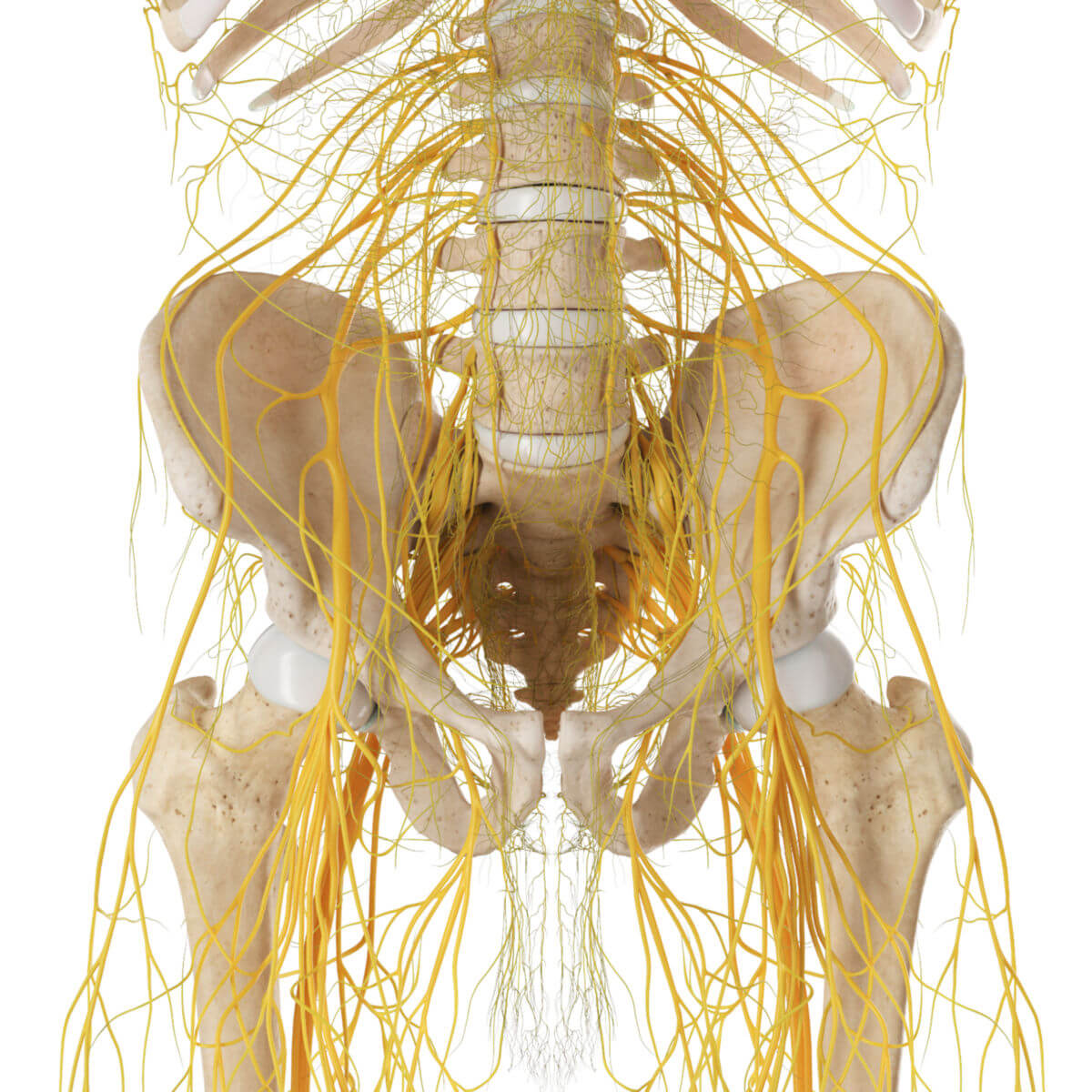Corpus: Femoral nerve
1. Definition
The femoral nerve is a peripheral nerve originating from the lumbar plexus (spinal cord segments L1-L4). It has motor and sensory qualities.
2. Course
The femoral nerve emerges from the lateral edge of the psoas major muscle, running under the iliac fascia. Running between the psoas muscle and the iliac muscle, the femoral nerve passes through the lacuna musculorum to the thigh.
3. Branches
Even before it passes through the lacuna musculorum, the femoral nerve gives off muscular branches (rami musculares) to the iliopsoas and pectineus muscles.
In the thigh, the femoral nerve innervates the extensors of the thigh, namely the quadriceps femoris muscle and the sartorius muscle, via muscle branches.
Further along its course, the femoral nerve gives off sensitive cutaneous branches:
- Rami cutanei anteriores for the front of the thigh
- Saphenous nerve for the medial side of the lower leg and foot
| Muscles innervated by the femoral nerve are: | |
|---|---|
| Psoas major muscle | Quadriceps muscle |
| Sartorius muscle | Iliac muscle |
| Pectineus muscle |
4. Clinic
As the femoral nerve supplies a large number of important muscles, paralysis, the femoral nerve paralysis, leads to severe movement disorders. Due to the loss of the psoas group, active flexion in the hip joint can no longer be performed, as the iliopsoas muscle is the strongest flexor in the hip joint. Affected patients find it difficult to sit up from a lying position. Due to the lack of strength in the quadriceps femoris muscle, the knee remains in a flexed position and can no longer be straightened under its own power. The leg buckles when stepping on it. The patellar tendon reflex (PSR) is significantly weakened or completely absent.



